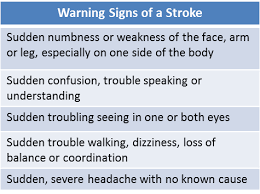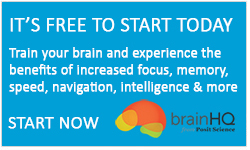Stroke and Brain Plasticity

The statistics surrounding strokes are fairly startling. That’s why it’s so important to know and be able to identify the signs of stroke for an optimal outcome. Stroke is the third leading cause of death in North America, affecting women more than men. And for each hour of delay in treatment, the brain loses as many brain cells as 3.6 years of aging. The good news is that there are some simple steps you can take in your daily life to help prevent many of the factors contributing to stroke.
Types of Stroke
The three main types of stroke are Ischemic Stroke, Hemorrhagic Stroke, and Transient Ischemic Attack. Pediatric strokes are considered a separate category, but they also fall under these main types with some additional contributing factors such as rare childhood diseases and malformed blood vessels.
Ischemic stroke is the most common type of stroke and is the result of blocked blood flow to the brain due to a blood clot. Whether it affects an artery leading directly to the brain (thrombotic stroke) or the clot forms elsewhere and travels through the bloodstream to the brain (embolic stroke), the most common cause of ischemic stroke is the buildup of plaque that causes arteries to narrow.
Hemorrhagic strokes are the result of uncontrolled bleeding in the brain. They can occur on the surface of the brain (subarachnoid hemorrhage) or to an artery deep within the brain (intracerebral hemorrhage). Damage from hemorrhagic strokes is caused by flooding at the location of the leak or from a lack of blood flow due to the leak.
Transient ischemic attacks (TIA) are mini strokes caused by blood clots where stroke symptoms can go away within minutes or hours. These attacks should not be ignored as they almost always lead to a more serious event; however, they do allow you to take preventative steps to reduce further risk of stroke.
Brain plasticity and the recovery process
Because strokes do physical damage to the brain; motor, cognitive and perceptual processes can all be negatively affected. Today, with a better understanding of brain plasticity, the recovery process involves physical conditioning as well as brain exercises designed to help rewire damaged locations and improve the associated bodily functions. Depending on where the damage occurred, different forms of treatment are used to help rebuild the functionality of the damaged brain. For instance, rehabilitating motor functions can include balancing exercises to strengthen the connection between the brain and muscle memory. Brain training exercises such as BrainHQ’s Brain Injury course can also be used to help improve and strengthen cognitive functions that were affected by stroke.
Taking some preventative steps
While thinking about strokes and their potential outcome can be quite scary, know there are some simple preventative measures all of us can take to help reduce the risk of suffering a stroke. First and foremost if you’re a smoker it’s definitely time to quit. Next, a heart-healthy diet should be on everyone’s to do list. So, whenever possible say yes to fruits and veggies and no to unhealthy fats and cholesterol. And remember to get fit. With regular exercise, which of course also includes training our brains with exercises from BrainHQ, we can condition our bodies and brains to be better prepared should a stroke occur, or to help prevent one altogether. Remember, having a healthy and fit brain can help reduce the negative effects of a stroke and, as part of a complete recovery program, can contribute to optimal recovery.
DynamicBrain Inc. is the Canadian Partner of Posit Science Corporation providing brain fitness program, BrainHQ in English and French.






 English
English
 Français
Français


